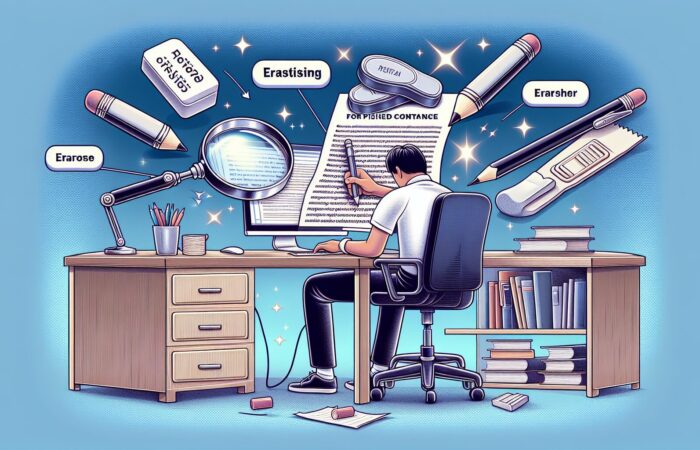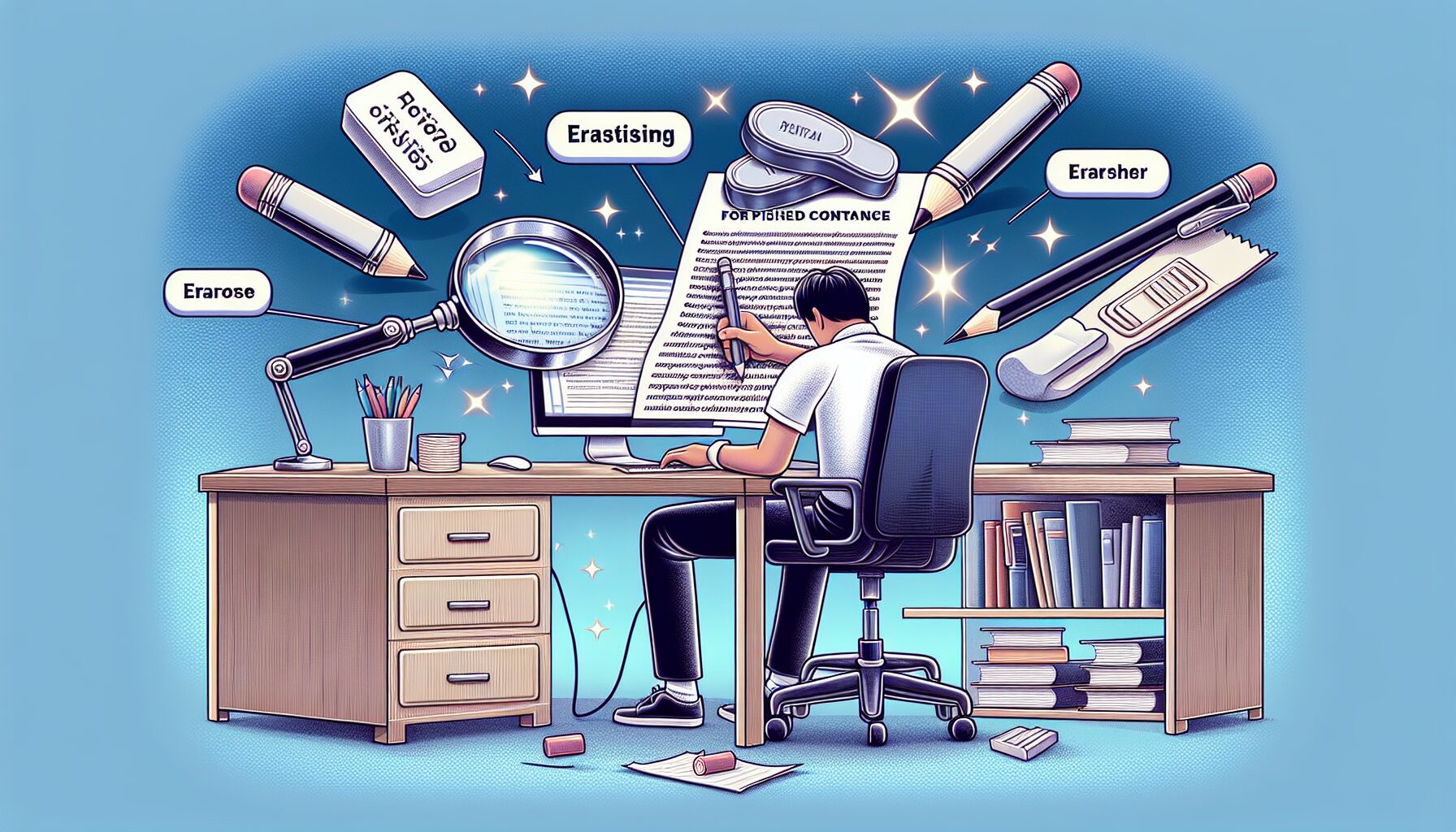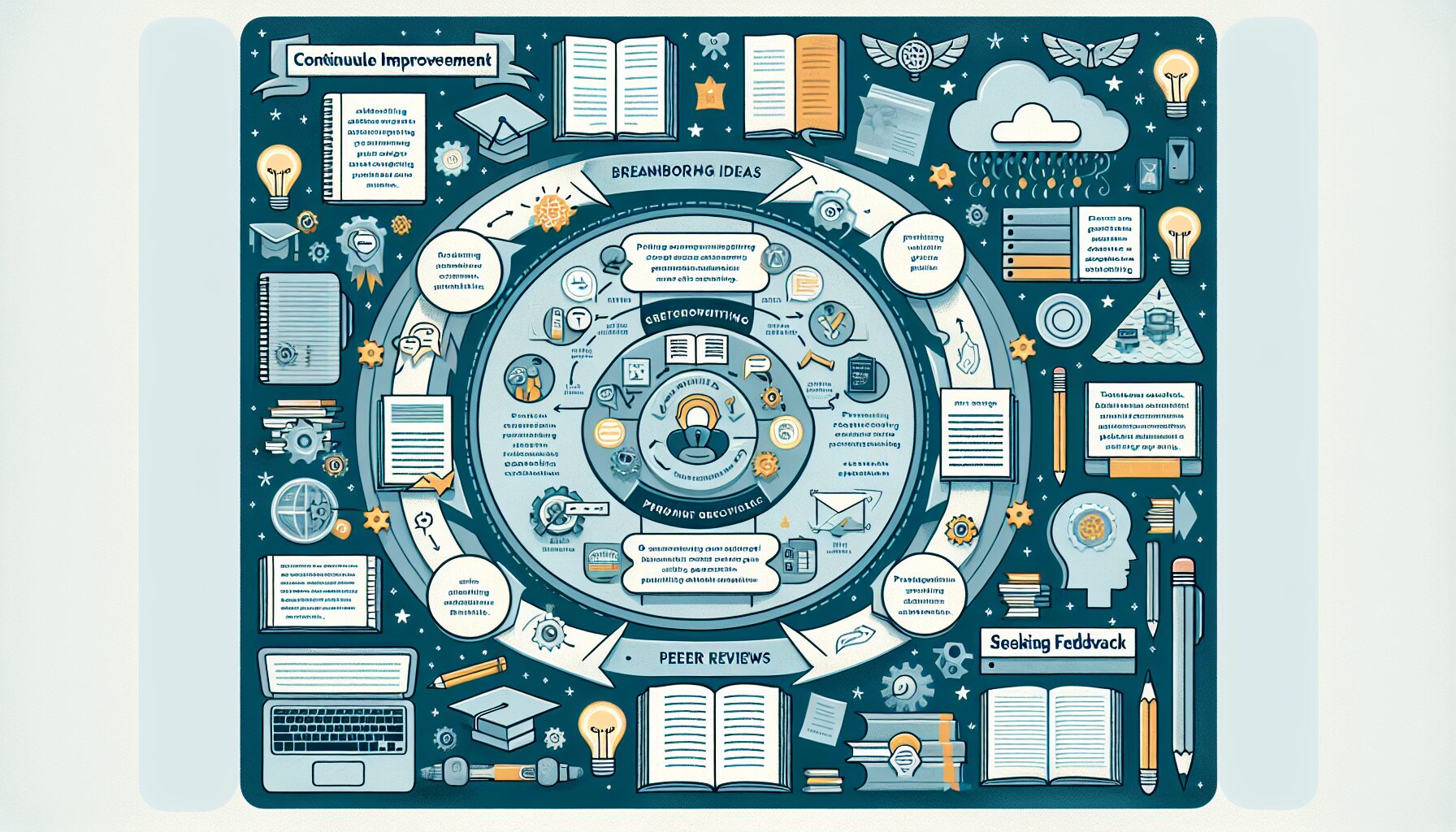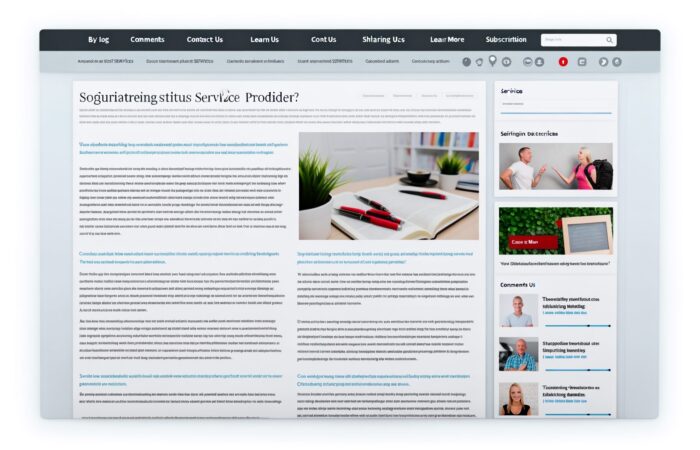Whether you’re jotting down notes for a class, crafting an email to a colleague, or penning your latest blog post, writing is an integral part of our daily lives. But let’s be honest, it’s not always smooth sailing. We all fall into some common traps that can make our writing a bit less stellar than we’d hope. Recognizing and understanding these pitfalls is the first step to becoming a better writer. So, let’s chat about some of these frequent slip-ups and set the course for clearer, more effective communication.
Spell Check Woes – Ever relied a bit too heavily on spell check? It’s a fantastic tool, but it’s not foolproof. It might catch your typos, but it won’t flag a properly spelled wrong word. Like mixing up “compliment” with “complement.” A quick proofread can save the day!
They’re, Their, There – It’s the classic mix-up, isn’t it? Homophones – words that sound the same but have different meanings and spellings – are frequent culprits in writing mishaps. Knowing what each word means can clear up confusion and improve your sentence structure significantly.
Commonly Confused Words
- Your/You’re: “Your” shows possession, and “you’re” is a contraction of “you are.”
- Its/It’s: Another possessive vs. contraction issue. “It’s” always means “it is” or “it has.”
- Loose/Lose: You might have a “loose” button, or you might “lose” your keys. They sound similar but are worlds apart in meaning.
Now, let’s talk about overusing words. It’s easy to get stuck on your favorite phrases or words, but repetition can make your writing dull. Varying your language not only keeps your reader engaged but also enhances your message.
Got a case of the long-winded sentences? It happens to the best of us! Sometimes, in an effort to sound more sophisticated, we pack too much into one sentence. The result? A confusing mess. Keeping it simple is often the way to go. Break it down into shorter, manageable pieces. Your readers will thank you!
Remember, writing is a craft, and like any craft, it takes practice. By watching out for these common mistakes, you’re already on your way to writing more effectively. Grab your pen (or keyboard!) and start your journey to becoming a writing wiz.
Avoiding Grammar and Punctuation Errors
Ever found yourself second-guessing your commas and semicolons or scratching your head over “their” vs. “there”? You’re not alone. Navigating the choppy waters of grammar and punctuation can feel a bit like trying to solve a Rubik’s Cube. But why does it even matter, right? Well, clear and correct grammar is your first step towards creating texts that shine and genuinely connect with your readers. Let’s dive into some common pitfalls and tips to keep your writing polished and professional.
Common Grammar Mistakes
First off, let’s tackle some frequent grammar goof-ups:
- Subject-Verb Agreement: Make sure your subject and verb are in a happy marriage; they need to agree in number. If your subject is singular, your verb should not be throwing a plural party.
- Tense Consistency: Stay in your time lane. If you start in the past, continue in the past, unless you have a really good reason to switch.
- Misplaced Modifiers: Keep your modifiers close to the words they describe. Don’t say, “I saw a puppy on my way home in a red jacket.” Unless the puppy is rocking that jacket, of course!
Punctuation Pitfalls to Avoid
Now, onto punctuation, the traffic signals of our language. They tell us when to pause, stop, or keep going:
- Comma Splices: A comma splice walks into a bar, it has a drink, it leaves. See the issue? Use a period or a semicolon instead of a comma between two independent clauses.
- Semicolons: The semicolon is like a soft stop; it links closely related ideas. Use it wisely to avoid run-on sentences.
- Apostrophes: They show possession or create contractions. Remember, “it’s” means “it is,” and “its” shows ownership.
Top Tips for Mastering Mechanics
Now that we’ve covered what not to do, here are some proactive tips to keep your grammar and punctuation in check:
- Read It Aloud: Hearing your text can help catch errors that your eyes might skip over.
- Shorten Your Sentences: Longer sentences are prone to more mistakes. Keep them short and sweet.
- Use Grammar Check Tools: Tools like Grammarly or the Hemingway Editor are great for catching common errors. But remember, they’re not perfect. Always double-check.
- Consistency Is Key: Whether it’s punctuation marks or grammatical structures, consistency makes your text easier to read and understand.
Remember, mastering grammar and punctuation doesn’t happen overnight. It takes practice, patience, and a bit of attention to detail. But the payoff is huge. Clear, error-free writing boosts your credibility and ensures your ideas are communicated effectively.
Enhancing Clarity and Conciseness in Your Writing
If you’ve ever found yourself rambling through a sea of words while trying to get your point across, you’re not alone. Achieving clarity and conciseness is an art form that every writer strives to master. So, let’s break down how you can make your writing clearer and more to the point, making it not only a joy for others to read but also a breeze for you to write.
Keep It Simple, Silly (KISS)
First things first, embrace the KISS principle: Keep It Simple, Silly. This isn’t about dumbing down your content; it’s about making it accessible and understandable. Go for straightforward language over complex or jargon-filled sentences. After all, the goal is to communicate, not to confuse!
Trim the Fat
Look at your sentences critically and ask yourself: Can this be shorter? Do I need that adverb? What about that adjective? Often, you’ll find that the answer is no. Here’s a quick list to help you trim the fat from your writing:
- Avoid redundant phrases: Phrases like ‘absolutely essential’ or ‘future predictions’? Redundancies can dilute your message.
- Cut unnecessary qualifiers: Words like ‘very’, ‘really’, and ‘quite’ often add little to the sentence’s meaning and can be removed without loss of impact.
- Use active voice: Active voice tends to be more direct and vigorous than the passive voice. For example, ‘The cat chased the mouse’ is snappier than ‘The mouse was chased by the cat’.
One Idea, One Sentence
Instead of piling multiple ideas into one lengthy sentence, break them up. Complex sentences can be confusing and make the reader work too hard. By keeping each sentence to a single idea, you improve readability and allow your points to shine clearer and brighter.
Paragraphs Are Your Friends
Similarly, let’s talk about paragraphs. A big block of text is daunting, isn’t it? Short paragraphs encourage reading by creating white space, which is easier on the eyes. Try to keep paragraphs to about three to four sentences focusing on one main idea. This way, you help guide your reader through your text logically and smoothly.
Be Ruthless When Editing
Finally, don’t be afraid to be ruthless when editing. If a sentence or paragraph doesn’t serve the purpose of your piece or add any real value, let it go. Yes, even if it’s a beautifully crafted sentence! Remember, you’re aiming for tight, lean writing that gets to the point and leaves a lasting impression.
Enhancing clarity and conciseness isn’t just about stripping down your writing; it’s about sharpening it to convey your message effectively. Practice these tips regularly and watch how they transform your writing into crisp, clear, and compelling communication.
Mastering Tone and Voice Consistency
Let’s chat about something that might not always take the spotlight but definitely deserves a standing ovation in the world of writing: consistent tone and voice. You know how you can recognize a good friend’s voice, even in a noisy room? That’s kinda like what your writing voice is—it’s what makes your writing unmistakably yours! And the tone? It’s all about how you say what you say, kind of like the vibe you give off when you’re telling a story.
So, why bother nailing a consistent tone and voice? Well, for starters, it builds trust with your readers. They come to know what to expect from you, and it feels as comforting and familiar as slipping into a favorite pair of jeans. Whether you’re dishing out advice, sharing stories, or even explaining complex topics, keeping a consistent voice helps keep your audience engaged and nodding along.
How to Keep It Consistent
- Know Your Audience: Imagine writing a letter to your grandma. Now, imagine writing one to your best friend. Feels different, right? Pin down who you are talking to, and let this guide your voice.
- Define Your Style: Are you witty? Or maybe more serious and straightforward? Decide on your style early on, and like a good habit, stick to it.
- Read It Aloud: This old-school trick never fails. Reading your work aloud can help you catch shifts in tone that you might miss when reading silently.
But, as with many things in life, flexibility is key. While consistency is essential, don’t be afraid to adapt your tone slightly depending on the topic or the situation. Think of it as tweaking the seasoning in a dish—it’s still your cooking, but sometimes it needs a little extra salt or a pinch of spice!
Why It Really Matters
Imagine picking up a book that starts in a chatty, casual tone and then flips into a formal, detached voice. Jarring, isn’t it? Consistency in your writing helps smooth out the reader’s journey. It’s like being guided on a trail by someone who knows it well; you can relax and enjoy the walk, knowing you’re in good hands.
To put it simply, mastering the consistency of your tone and voice is like perfecting your signature. It’s uniquely yours, instantly recognizable, and speaks volumes about you. Whether you’re writing a blog, a book, or a tweet, these elements of your writing craft let your personality shine through, making your text as relatable as a coffee chat with an old friend.
So, go ahead, find your voice, stick with your tone, and watch as your writing becomes not just seen but felt by your readers. After all, isn’t that the kind of connection we all aim for in our writing?
The Importance of Revising and Editing
Let’s dive into something that might just save your writing from the dreaded depths of misunderstanding: revising and editing. Now, I know what you’re thinking, “Isn’t writing it once hard enough?” But trust me, embracing this stage will elevate your work from good to great!
Think of revising and editing as giving your words a second chance to shine brighter. It’s like cleaning up after a fabulous party; the fun part is over, and now it’s time to make everything look even better than before.
Why Revise and Edit?
First off, let’s clarify why revising and editing are absolute must-dos:
- Clarity: It helps clarify your ideas, making sure your audience gets the message exactly as you intended.
- Impact: It amplifies the impact of your writing by polishing your words and fine-tuning your arguments.
- Error-free Content: It catches those sneaky typos and grammatical errors that could distract readers from your main points.
Revising vs. Editing: What’s the Difference?
Although they’re often used interchangeably, revising and editing are not twin siblings, but close cousins. Revising is about the big picture — reorganizing your points, tweaking the flow, and making sure each paragraph supports your overarching theme. Editing, on the other hand, is about getting down to the nitty-gritty: checking grammar, punctuation, and spelling.
How to Effectively Revise and Edit
Here are some actionable tips to take your revising and editing game to the next level:
- Take a Break: Step away from your work for a bit. Coming back with fresh eyes can make a world of difference.
- Read Aloud: Hearing your words can help catch awkward phrasing and clunky sentences that you might miss when reading silently.
- Peer Review: Don’t shy away from asking for feedback. A fresh perspective can catch things you’ve overlooked.
- Use Tools: Leverage technology. Tools like Grammarly or the Hemingway App can help you spot errors and improve readability.
Remember, the goal is to make your document the best it can be. It’s not just about fixing what’s wrong, but also about recognizing and enhancing what’s right. After all, the devil is in the details!
Revising and editing might seem daunting at first, but with practice, it becomes a natural part of the writing process. Think of it as an opportunity to refine your craft and communicate your message more powerfully. So, roll up your sleeves and give your writing the polish it deserves. Your readers will thank you for it!
Utilizing Tools and Resources for Better Writing
Whether you’re crafting a snappy blog post, a compelling article, or just trying to nail that perfect email, using the right tools and resources can make a world of difference. Let’s dive into some of the top go-tos that can help transform your writing from good to great!
Spellcheckers and Grammar Checkers
First things first: let’s tidy up those sneaky typos and grammar gremlins. Tools like Grammarly and ProWritingAid aren’t just spellcheckers. They analyze your text for grammar errors, punctuation mistakes, and style issues. These tools often offer explanations for their corrections, which means you’re not just getting a quick fix—you’re learning how to avoid the same mistakes in the future. Pretty neat, right?
Readability Tools
Ever wondered if your writing sounds too complex or maybe too simplistic? Hemingway App to the rescue! This tool evaluates the readability of your writing and suggests how to make your sentences crisp and clear. It highlights hard-to-read sentences, suggests simpler alternatives to complex words, and even advises on the use of passive voice. It’s like having a little editor inside your computer!
Plagiarism Checkers
Originality is the hallmark of great writing. To ensure your work is uniquely yours, consider using plagiarism checkers like Turnitin or Copyscape. These resources are incredibly useful for academic writers, content creators, and anyone else who wants to guarantee that their work is 100% original.
Reference Management Software
If you deal with lots of citations and references, you know it can get a tad overwhelming. Tools like Zotero and EndNote can save you tons of time and stress. They help you collect, manage, and cite your research sources. Plus, they make it super easy to switch between different citation styles with just a few clicks. No more citation headaches!
Writing Communities and Workshops
Sometimes, the best tool at your disposal is a community of fellow writers. Platforms like Scribophile and Wattpad offer vibrant communities where you can get feedback on your work, join writing challenges, or simply connect with like-minded individuals. There’s nothing like a bit of peer review to help polish your prose.
Online Courses and Webinars
Want to keep sharpening your skills? Check out websites like Coursera or Udemy, where you can take writing courses from universities and professionals around the world. Whether you’re into creative writing, copywriting, or something else entirely, there’s a wealth of knowledge just waiting to be tapped into.
Remember, the best writers are the ones who continually strive to improve their craft. By integrating these tools and resources into your writing routine, you’re not just fixing errors or avoiding pitfalls; you’re elevating your entire writing game. So, why not give some of them a try and see just how much your writing can improve?











No Comment! Be the first one.